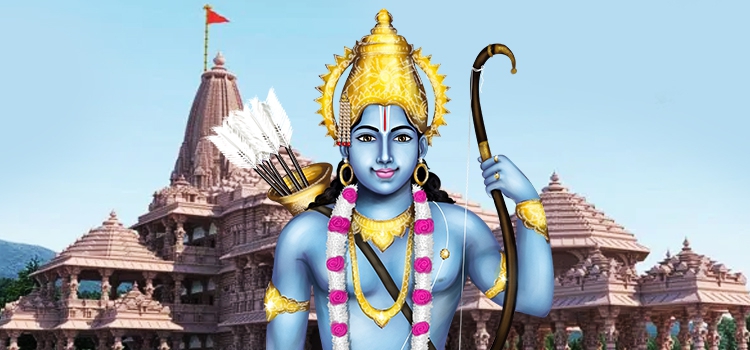Ayodhya Readies for Ram Mandir
Ayodhya Readies for Ram Mandir :
The Ayodhya issue, which goes back more than a century, has proved to be one of India's most vexing court cases and owes its birth to identity politics.
Sri Rama is one of the most revered Hindu gods. Hindus believe that he was born in Ayodhya, a city in Uttar Pradesh. At the heart of the row was a 16th-century mosque where Muslims claim to have worshipped for many generations.

The Babri Masjid mosque at the center of the dispute was demolished by Hindu mobs in 1992. The riots that followed, killed nearly 2,000 people.
Many Hindu temples had been pillaged and razed during Muslim invasions, and Muslim rulers often built mosques over their ruins. The Babri Masjid, too, was believed to have been constructed in this manner. With the growth of identity politics, fueled to some extent by the minority appeasement policies of the Congress, Ayodhya became a bone of contention between Hindus and Muslims. Ayodhya, being the birthplace of Lord Ram, and the place where the mosque stood, being touted as the spot where Ram was born, the matter of building a Ram temple here became invested with great religious, cultural, and emotional significance for Hindus.
Muslims in Ayodhya say that they used to offer prayers at the mosque till December 1949. This was when some Hindus allegedly placed an idol of Ram in the mosque and began to worship it. In the decades that followed, the two groups went through prolonged litigation for control over the site.
The court case:
There were three main contenders in this dispute - the Muslim Waqf Board, which oversees the maintenance of Islamic properties in India, and two Hindu groups. The Hindu litigants include the Hindu Mahasabha, which is a right-wing political party, and the Nirmohi Akhara, a sect of Hindu ascetics.
In 2002, ten years after the demolition of the mosque, these parties filed a title dispute in the Allahabad High Court. In September 2010, a verdict decreed that the 2.77 acres of the land under dispute would be divided into three equal parts.
Accordingly, the site was to be split, with the Hindu community getting control of a third, the Muslims another third, and the Nirmohi Akhara sect the rest. The Hindus were given control of the main disputed area, where the mosque had stood.
In the judgment, there were three key observations. These were:
• The disputed spot was the birthplace of Ram.
• The Babri Masjid was built on the ruins of a Hindu temple
• The mosque was not constructed in accordance with Islamic tenets.
In 2011, this ruling was suspended by the Supreme Court after both Hindu and Muslim groups went on appeal against it. The November 2019 verdict cited a report by the ASI (Archaeological Survey of India) to affirm that the remains of a structure "that was not Islamic" lay beneath the demolished mosque.
To compensate the Muslims, the SC has directed the central government to establish a trust to manage and oversee the construction of the Ram mandir. The court also observed that the demolition of the mosque went against the rule of law.
Today (August 5, 2020) is the ground-breaking or Bhoomi Poojan ceremony for the Ram mandir in Ayodhya. Prime Minister Modi will perform the ceremony. He will be accompanied by the UP chief minister, Yogi Adityanath, RSS leader, Mohan Bhagwat, and 175 spiritual leaders.
Architectural features of the proposed Ram Mandir:
The Ram mandir has been conceptualized as a grand, 3-storied building of stone, with many domes, turrets, and pillars, standing on a raised platform. The temple will be nearly double the originally planned size, with a height of 161 ft.. Its interiors feature a high dome with many intricate carvings. The design has been changed after the Supreme Court’s 2019 verdict, The architect Chandrakant Sompura, who hails from a family of temple architects. Thirty years ago, he was asked to create the design for the temple. His father, Prabhashankar Sompura, designed and oversaw the reconstruction of the famous Somnath temple. The Ayodhya Ram mandir will follow the ‘Nagara’ style of architecture. The tweaked design features five domes instead of two in order to accommodate more devotees. A tower or shikhara will come up above the sanctum sanctorum. Once the 'Bhoomi Poojan ceremony gets over, the construction will begin. The Ram temple may take three years to build, says the architect.
As the main group of Muslim litigants has declared that there will be no appeal against the SC verdict, the stage is set for a long-cherished Hindu dream to come true. And finally, the ghosts of Ayodhya, Hindu and Muslim, have been laid to rest.



















